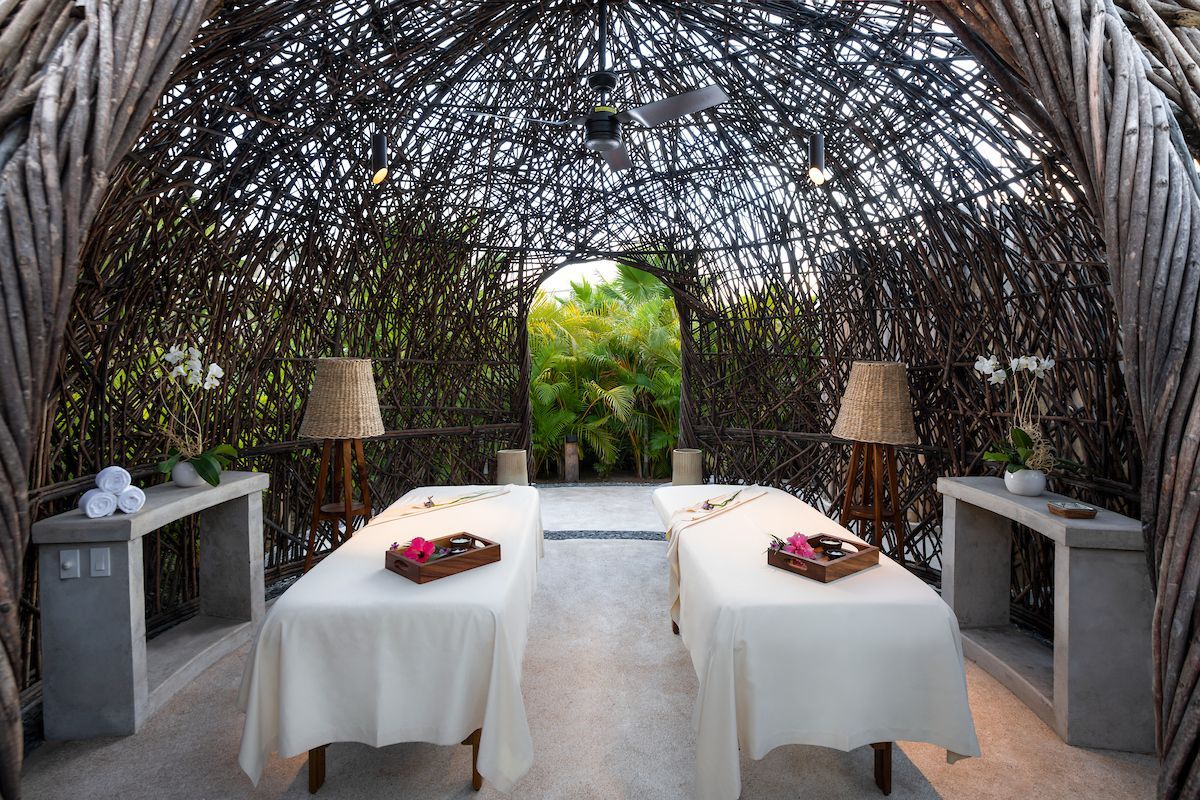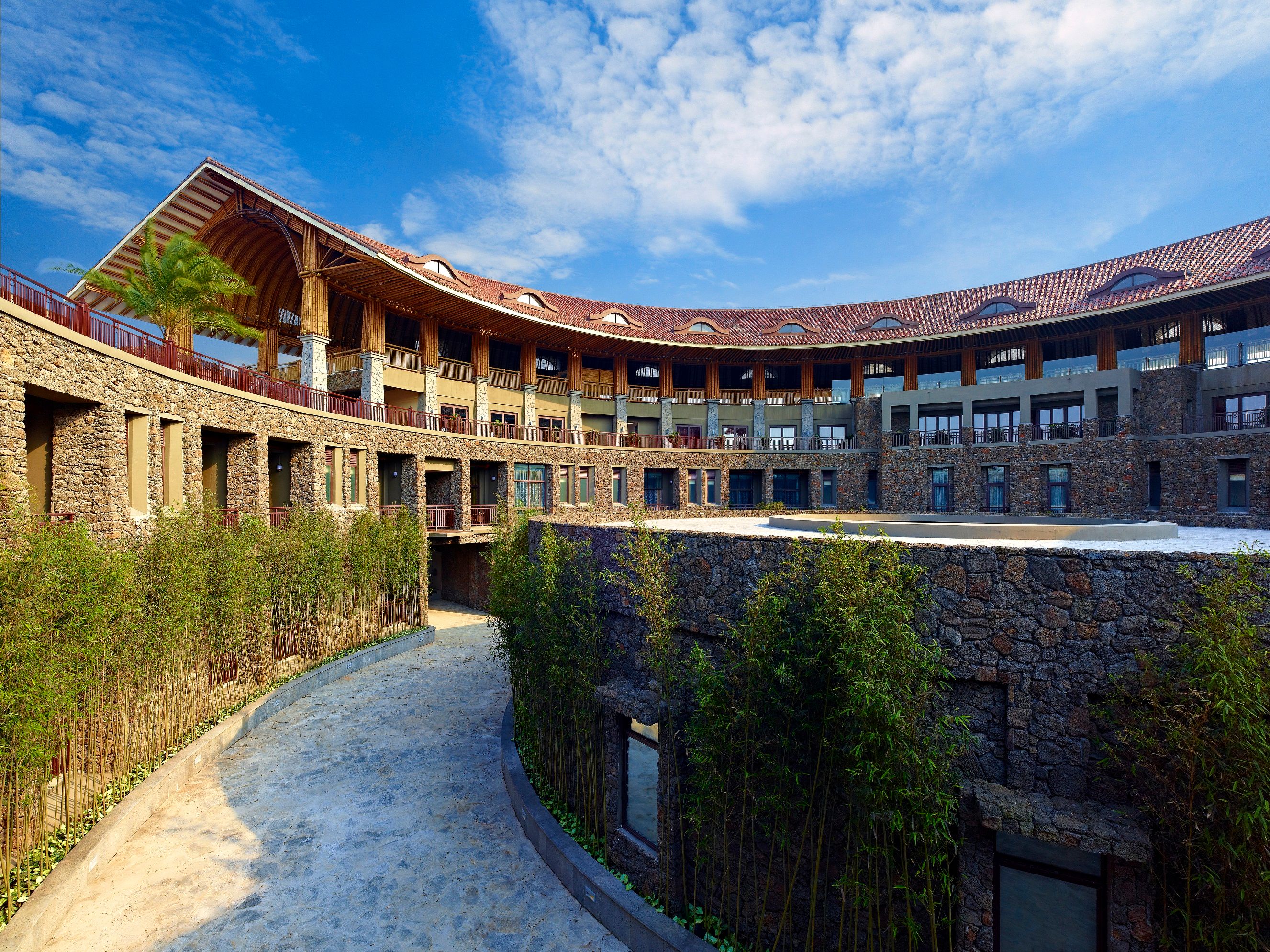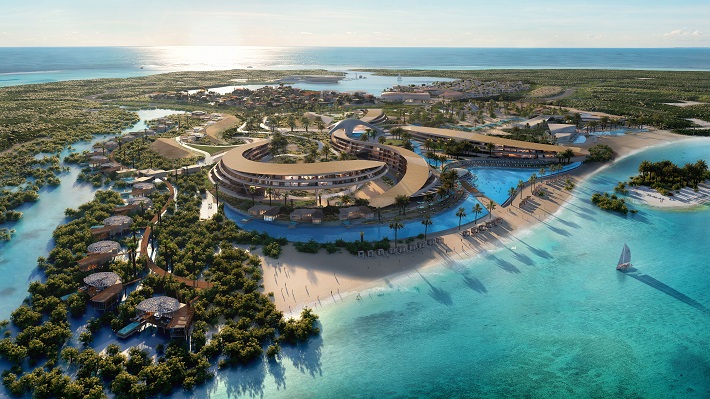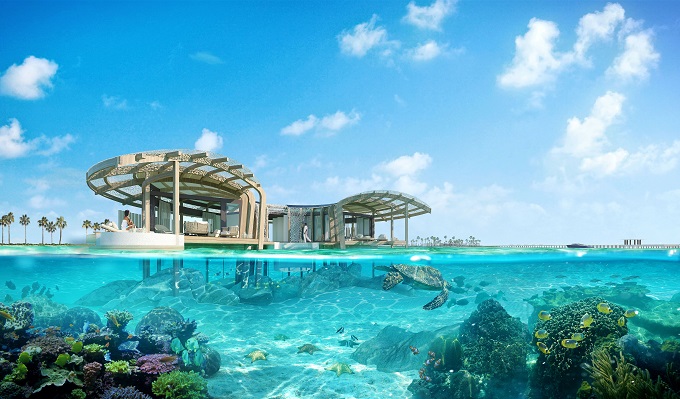SB Architects Shares the Benefits of Biomimicry in Hotel Design
The award-winning architecture firm SB Architects has built an international reputation for designing hospitality environments that connect users to the natural world, and today announced its perspectives around incorporating nature's principles in hotel design and creating restorative solutions where the built environment enhances rather than detracts from nature. As travelers seek nature immersion and experiences that enhance well-being, and efforts in environmental and energy conservation continue to grow, biomimicry is a path toward building hotels, resorts, and spas with nature and not against it.
"Nature recycles materials, uses only the energy it needs, and relies on abundant and readily available resources, using rare resources sparingly," says SB Architects President and Principal, Scott Lee. "Guided by lessons in biomimicry and the sustainability that already exists in the natural world, our firm aims to emulate nature and allow its naturally occurring forms and functions to shape our designs."
Design Rooted in Ancient Wisdom
Lee believes that much is to be learned from earlier generations, and knowledge from the ancients was applied in the design of Mission Hills Volcanic Mineral Springs and Spa, located in the volcanic region of China's Hainan Island.
Mission Hills, a collaborative design effort between SB Architects and landscape architects EDSA, honors a time when spaces were designed to be used by a community, to function efficiently while utilizing local resources, and to achieve great longevity.
Project owners of the Mission Hills Group envisioned the The Spa at Mission Hills - the central defining feature of the expansive spa and hot springs destination at Mission Hills Haikou resort - as referring to the walled village building style unique to the Hakka people. The round shape of the spa structure takes design inspiration from the traditional Hakka Earthen Fortresses of Southern China, distinctive structures that were historically used for defense and communal living.
The fortresses were rammed-earth structures able to weather aging and natural disruptions for centuries and are considered one of the most ecologically green buildings in the world. Made mainly of local soil, wood, stone, and bamboo, the earthen buildings carry several advantages, including maintaining optimal temperature control due to the thickness and density of the material.
In addition to embracing the Hakka style in the spa, where curved buildings create a peaceful, protected, and meditative environment, Mission Hills Group also wanted the design to integrate native bamboo. Project constraints prevented SB Architects from using bamboo architecture in a structural way for the project in its entirety, but a dramatic 800-meter raised meandering walkway of locally sourced bamboo grounds the design in the nature and topography of Hainan Island. Used structurally for the walkway, as cladding material, and for decorative purposes, the bamboo represents a versatile, renewable resource.
Built Environments Forged from Naturally Occurring Forms
Honoring earth architecture from hundreds of years ago, The Spa at Mission Hills was designed in close alignment with nature through structures that rise with materials from the region, locally abundant lava stone and bamboo.
At Dunes Resort, Middle East, a destination resort featuring 250 guestrooms and 21 branded residences, the design emerged from the wind-whipped forms in the area, from the wind-carved coast to distinctive patterns in the landscape and sand dunes. Dunes both protect plant and animal communities inland and provide natural coastal protection against swells and coastal storms on sandy shorelines.
Aiming to strike a balance between open space and built structure and between nature and man-made, the resort was designed so that architecture and landscape blend together through natural curves that rise out of the topography.
"When visiting the site, we were greeted with gusts of wind at the top of each dune, and experienced reprieve from the wind and sand when reaching one of the valleys between the dunes," says Lee.
"Emulating this natural, flexible form of protection, we designed the resort's main public spaces and pool areas in the ‘valley' between the sand dune-inspired guest wings, forming a wind break as protection from the strong winds that can occur in this region."
Design in Sync with Existing Eco-Systems
Eco-Resort, Middle East is a luxury destination resort comprising 50 villas where some of the best coral and sea life exists in the Red Sea. Here the firm utilized sustainable strategies and biomimicry in the design approach for two different villa types, with a goal to enhance the natural environment, rather than simply minimize negative impact.
After close study of the site's topography, the architects situated each over-water bungalow in a specific area where it would not impact the existing coral reef, and designed the piers supporting the villa to create new reef and enhance the existing ecosystem. Guided by the fact that coral colonies are formed when floating coral larva attach to a submerged rock, the pier base was designed with a rough, layered texture to create the ideal environment for new coral growth.
Designed to float up and down on the water while the piers hold it in one location, the villa's subtle bobbing motion generates a small amount of energy that is stored and used to power part of the villa.
In designing the Eco-Resort mangrove villas, the design team situated each structure in sandy patches between dense mangroves, with great respect for the site as one of the most diverse and sensitive islands in the entire lagoon. After carefully seeking out specific locations to ensure the villas would not destroy the delicate mangrove ecosystem, the team spaced each one a minimum of 25 meters apart, maintaining a height limit so as not to disrupt migratory bird paths.
In addition to being guided by the behavior of coral reefs and mangroves, the team drew from the local osprey nests - one of which is located on the same island as the resort - to design the guest accommodations. The osprey nest is made of sticks woven together to make a circular form, and the nest-clad villa blends with the natural environment so as not to detract birds from flying near the resort destination.
Positive Outcomes for the Planet and Hotel Guest Well-being
Though considered "alternative," and "non-traditional" forms of lodging, yurts, cocoon-shaped tents, and nest-like circular structures offer a unique range of benefits. While we have grown accustomed to sharp corners and angular walls, spending time in round spaces has a restorative quality, and SB Architects often integrates such spaces in the spa, hospitality, and resort environments it designs. At the spa at the new Conrad Punta de Mita, where strong connections to Mexican culture and Huichol rituals are found in a material palette of natural fibers and locally sourced stone, a biomimetic effort is evident in outdoor cocoon-style pods inspired by the indigenous peyote plant. Conrad Punta de Mita's cocoon-style pods reflect nature's beauty and sublime simplicity through a timeless shape that carries with it a sense of comfort, protection, and even transformation or gestation.
"Creating a built environment in harmony with nature goes hand in hand with nurturing a sense of spiritual well-being," says Lee. "In addition to reflecting a more balanced approach to our planet's resources, new hotel and spa structures designed with biomimetic principles can lead to transformation and personal development, by putting guests in touch with nature's time-honed patterns, shapes, and processes."
About SB Architects
Associate Account Manager
Glodow Nead Communications
T: +1 714-654-5733
E: [email protected]
W: http://www.glodownead.com/










